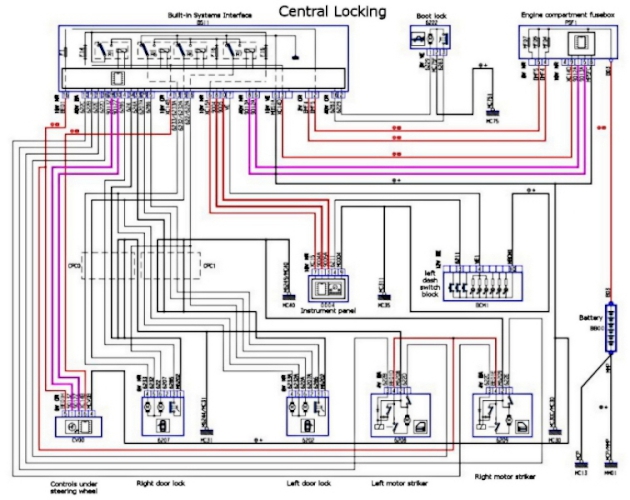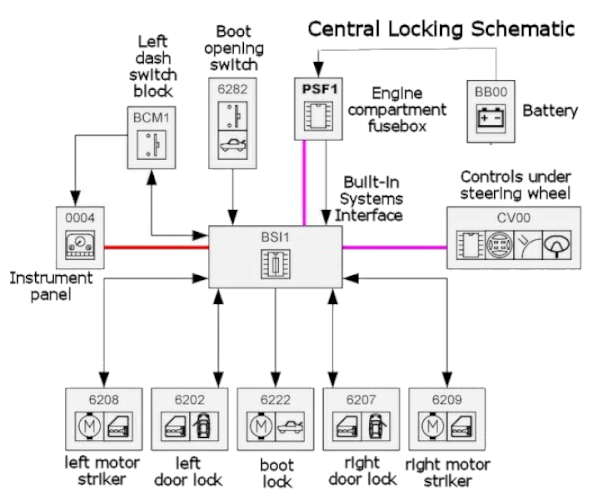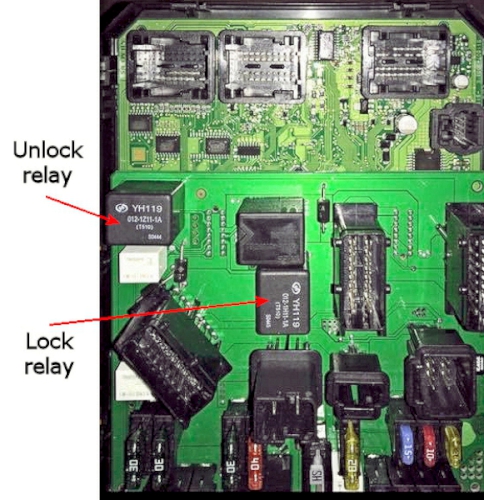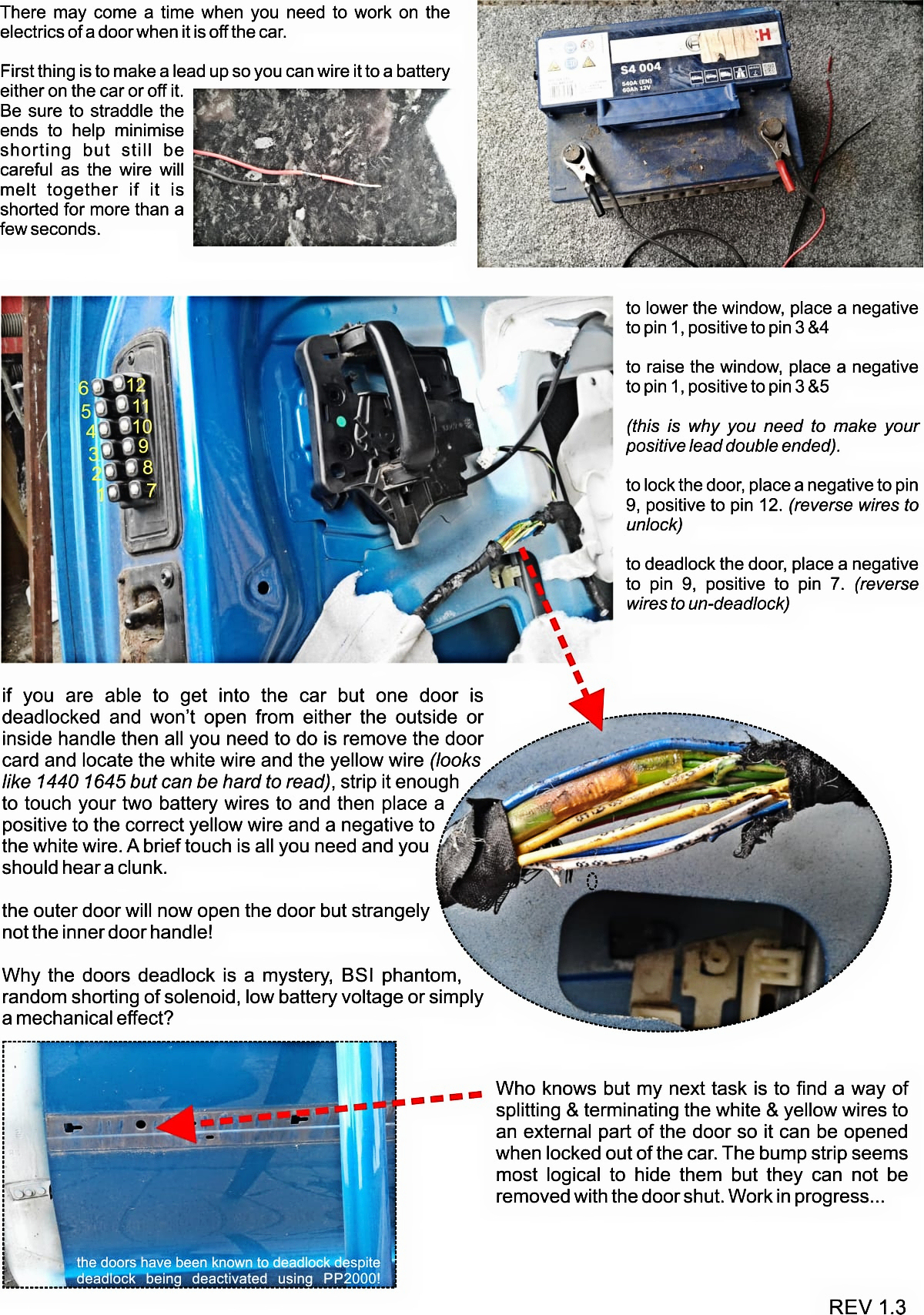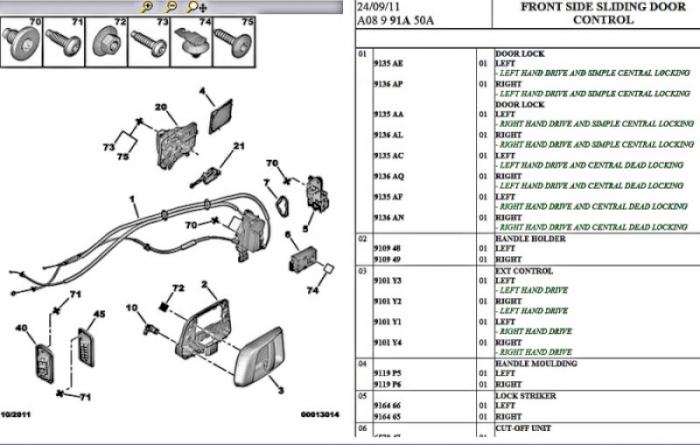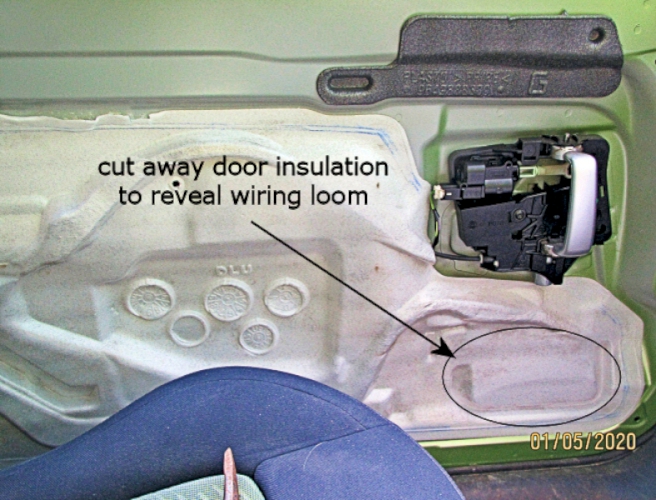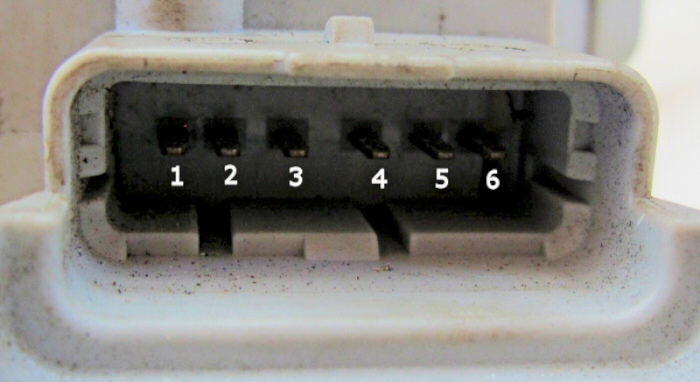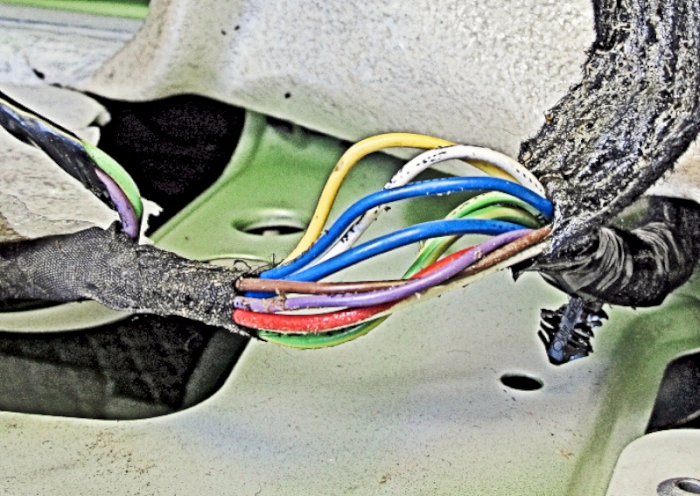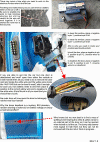Central Locking & Door Won't Open
Door unlocks but not moving

Unusual one - but check the locating spigots. They can rust and expand under the cushioning buffers (if still fitted). Then the spigots can stick in the sockets and the door won't move (or moves slightly), even after the unlock has initiated and the back of the door has pushed out.
Door Locking

The door locks are part no 9135AF (left side) and 9136AN (right side) for UK RHD cars. The drivers' side lock has three cables as there is also provision for unlocking with the key.
The deadlocking on these cars is fiendish and at 13+ years old perhaps not surprising that one or two are going faulty. You need to appreciate that the door locks are complex and involve two small electric motors - if one motor "misfires" once, the passenger door can be left, stuck closed, in a deadlocked situation.
There IS a way in (see below) with thanks to the members who helped when it happened to me.
Passenger Door stuck closed
- should the switch under the filler cap fail, it "kills" the door. check the filler cap switch
- check that the inner door cover isn't fouling the wing.
If not replaced properly, with ALL the clips in place, the door cover can spring away from the door and jam against the B-post. - check that the in-door actuator isn't damaged or stuck.
- if it remains deadlocked, there is a way in once the door card is off: note: the door cover WILL come off when the door is closed.
As a precaution disconnect the car battery then:

Remove part of white insulation pad at the front, bottom of the door to reveal the main wiring loom.

Open the wiring loom and look for 3 wires, blue, white and yellow. There are similar wires for the window motor, don't confuse them. Most manufacturers use trace colours but Peugeot use numbers which are difficult to see.

Pin 4 - white - wire 6233A - deadlock motor
pin 5 - blue - wire 6232A - common
pin 6 - yellow - wire 622A - lock/unlock motor
Ignore Pin 1 - light green; Pin 2 - purple; Pin 3 - green which are signal wires from microswitches inside.
Identify and cut the three wires and find a separate 12volt battery or power supplier - you won't want your main battery or relay contacts joining in the fun!
The deadlock motor is across the white and blue wires - should take around 1amp briefly (both polarities) as it rotates the pinion along the rack and engages/disengages the deadlock. I found that +ve to the blue and -ve to the white wire cleared the deadlock.
You should now be able to transfer the connections to the yellow and blue wires - again, should take around 1amp briefly. If the deadlock is disengaged, the door should now unlock and you can open the door.
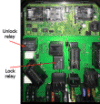
There are two relays in the BSI module which reverse the polarity to the lock actuators. If they fail (and they do) they can send a permanent "lock" or "unlock" signal to both door locks regardless of whether you press lock or unlock. If the problem is just one door the relays are OK.
Spencer Waring discovered that they are relay type YH119 012-1Z11-1A (unlock) and 012-1H11-1A (lock). Separating the boards was fairly nerve-wracking and it wasn’t the easiest solder job as the relay was stuck solid to the board with the lacquer they spray on them! Patience is key.
1007's are normally set up to deadlock on first operation of key or press of fob button.
To change to single (normal) locking: using PP2000.
- ECU
- Global test
- Built-in Systems Interface
- Configuration
- Customer Options
- Locking/Unlocking
